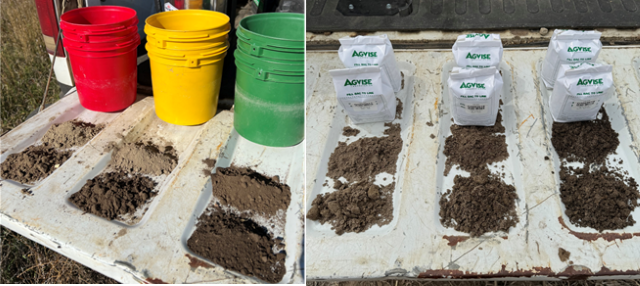Agronomy Update
Jul 22, 2024
Horizon Resources Yield Contest
We are excited to announce the first ever Horizon Resources yield contest for dryland durum and spring wheat, and irrigated spring wheat. Modeled after the National Wheat Foundation’s National Wheat Yield contest, our goal is to highlight the Horizon Resources member customer that produces the highest yielding and highest quality wheat and durum grown in our territory. The winners in each category will receive a Traeger Ironwood XL grill valued at $1,995. The contest rules including a link to sign up are here in the PDF. If you have any more questions please feel free to reach out to Dr. Audrey Kalil at the Williston Agronomy location.Current Head Scab Risk
Despite warmer temperatures, the high relative humidity which drives scab risk has stuck around. Below are the NDSU Small Grains Disease Forecasting Model scab risk map (top) and the National Fusarium Risk Tool map (bottom) for very susceptible varieties of HRSW or durum flowering July 21st or July 22nd respectively. According to these maps, scab risk in the southwest part of the state creeping north into Williams County has decreased. The predicted risk of scab remains elevated across the northern tier and to the west. For durum, susceptible varieties of HRSW and barley that are flowering or heading in the case of barley, this week use these maps as a reference. If your durum/wheat was flowering or barley was heading last week, refer to the maps in that newsletter to evaluate your risk as a fungicide applied now would still be effective. It is important to remember that the models are not perfect, so there is no guarantee that crops in the green/ yellow this week won’t be affected by scab.Dr. Audrey Kalil, Agronomist/Outreach Coordinator
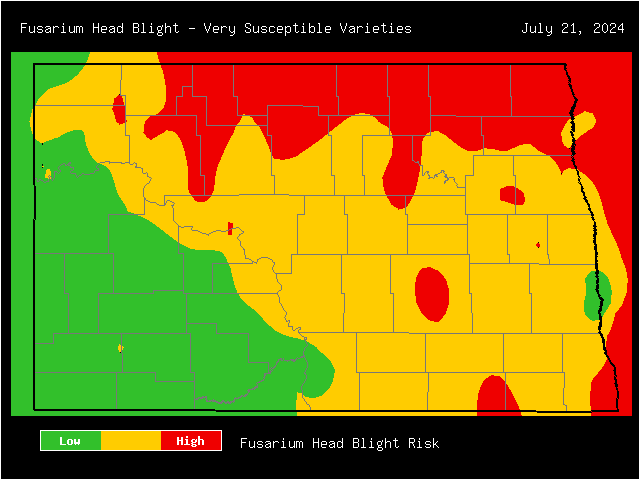
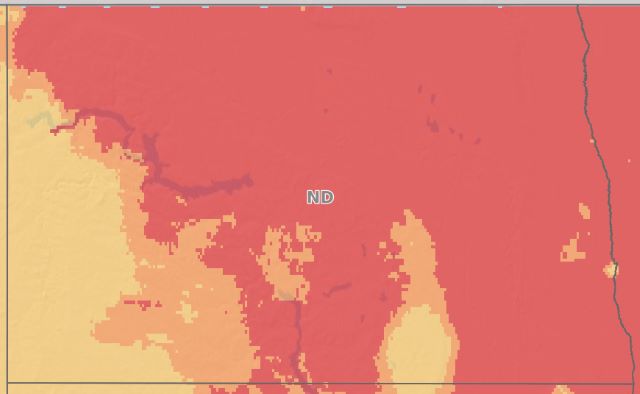
Preparing for Desiccation and Fall Weed Control
Harvest season is almost upon us and while we are not really ready for fall spraying, now is the time to plan for making the best of your fall weed control opportunities. One of the main reasons I want to bring this up this early is that we have some of the perennial weeds like field bindweed that will dry up and brown up fairly quickly after harvest and a lot of times will not take chemical into the plant when we do our normal fall spraying. If you have established patches of field bindweed or creeping jenny, the best time to spray this is usually right after harvest while the plants are still green and growing. One of the better products we have been using is a fairly old product called Landmaster BW with the BW standing for bindweed. This is a combination of glyphosate and 2,4-D Amine along with surfactants. We have tried to make our own equivalent tank mixes using the same amounts of both products, but once again we are not able to replicate the surfactant loads and our tank mixes usually do not have the same efficacy as the Landmaster BW.We also need to plan ahead for spraying paraquat for desiccation of pulse crops. All applicators and handlers will have to have a separate certification that will need to be current. This is not the same as the license required to use restricted use pesticides but is a federal law that will be regulated by the ND Department of Agriculture. The link to the training is https://campus.extension.org/enroll/index/php?id=1660
We do not check for this, so make sure you are up to date with you certification.
Most of our other fall spraying is targeted towards the middle of September and later, all the way up to freeze up. Some products will need to be sprayed before a killing frost that will eliminate plant uptake, and some products should be applied as late as possible before the ground is frozen.
Glyphosate timing for Canada thistle is more triggered by day length, so once we have the shorter, cooler days, the plant is going to store all of its energy in the roots for winter instead of trying to make seed, so this is the best time to spray glyphosate for Canada thistle. As we get later in the year, we spray a lot of Valor or flumioxazin products for residual weed control in the spring. These products are really good on marestail and Narrowleaf hawksbeard, so if you have fields with these problematic weeds, make sure you spray this fall. We are also counting on the residual control for kochia suppression and other small seeded broadleaf weeds.
With the later timing with these products, we are usually adding 2,4-D and/or glyphosate with these products to help control the winter annuals which may have already germinated at this point. This practice has been a good tool to control Narrowleaf hawksbeard especially when going into a pulse crop next year, just be careful with your 2,4-D rates. A couple more products that both require significant moisture to work into the soil profile are Prowl H2O and Anthem Flex. Both of these have their fit in a few crops including lentils and both of them will normally work better when fall applied since we will usually have enough fall and winter moisture to get these products into the soil. All of these products need planning for both the timing of the application, the weeds being targeted, and the crop rotations being used. If you have any questions, please contact one of our Agronomy locations to get the solutions you need.
John Salvevold, Agronomy Division Manager, CCA
Precision Fertilizer Application
Aerial imagery collected via a drone or satellite can help shed light on where the high and low productivity areas of your fields are located, facilitating the adoption of precision fertilizer application. Below is an aerial image of a durum field collected at the early flowering growth stage with our drone. The red areas are low productivity and the green areas are high productivity according to the multi-spectral camera which allows us to measure NDVI. NDVI, or Normalized Difference Vegetation Index, is a measurement of the amount and health of vegetation on a landscape. The photos below reflect what the crop looked like in both the high and low productivity areas.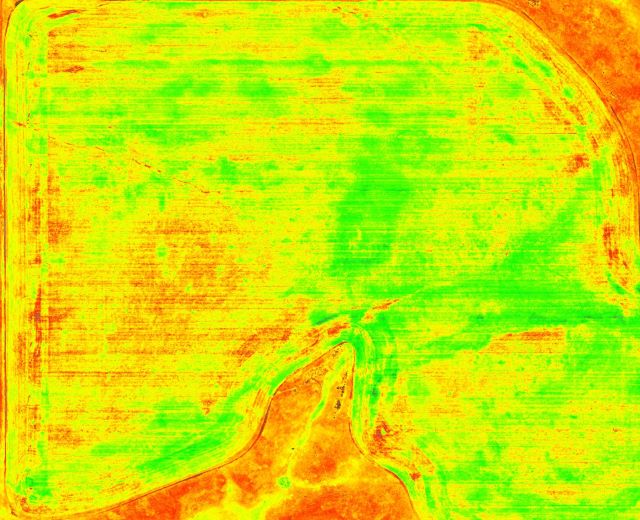
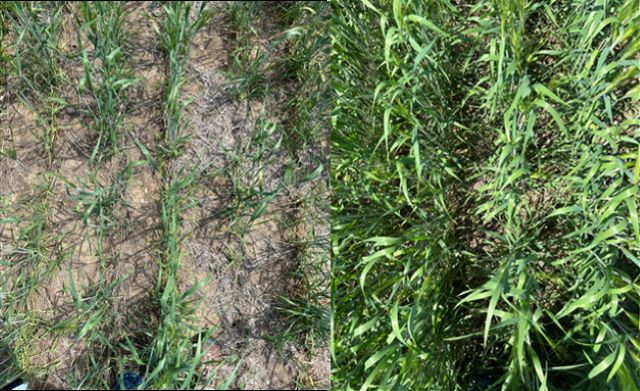
Sara Erickson, who oversees our precision fertility program in Williston, reviewed satellite imagery of that same field collected in previous seasons and found that they matched what we were seeing with the drone and on the ground. For our customers that use our precision fertility recommendation services, we use satellite imagery to guide where we collect soil samples for the high, medium and low productivity areas of their fields. This ensures that the highest yielding areas of the field get the fertility that they need, and the lower yielding areas are not made worse through excess fertilizer application. This maximizes your ROI for that field, and in some instances can reduce the total amount of fertilizer applied. Knowing your soils doesn’t just help with fertility recommendations, as pH, organic matter and soil texture affect herbicide functionality as well. If you are interested in adopting precision fertility application on your farm or conducting soil testing in general, please reach out to our Agronomy locations.
